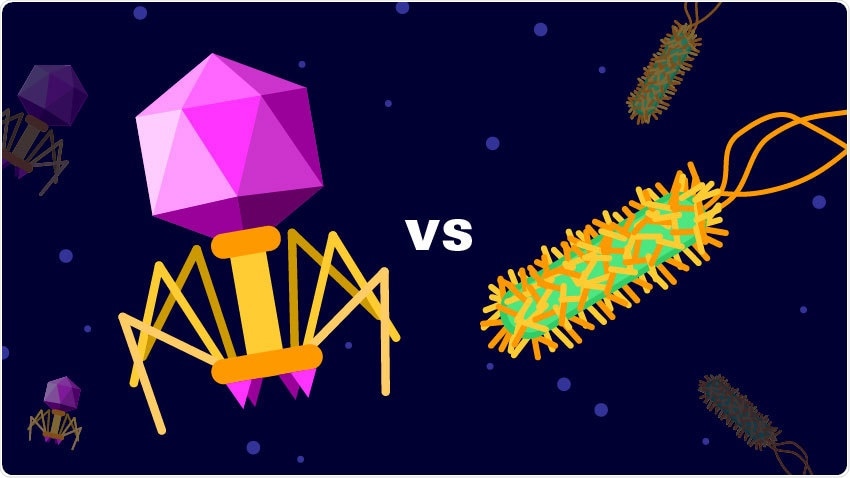The proverb “all things in moderation” holds good not only for food and drink but also for the cluster of microorganisms found inside the human gut. These microorganisms help people to digest the food and drink.

Image Credit: Stephanie King.
It was found that the rule may also apply to the not-so-studied bacteriophages—viruses that infect the bacteria dwelling inside the individuals.
Similar to Russian nesting dolls, the human body hosts almost 100 trillion bacterial cells that constitute the microbiomes—and those bacterial cells come with their own inhabitants.
We’re appreciating more and more that the most abundant microbial entities in the human gut are actually viruses.”
Eric Martens, PhD, Associate Professor, Department of Microbiology and Immunology, Medical School, University of Michigan
Martens and his group have been analyzing the mysterious way bacteria and their viruses seem to exist together within the human gut. A hairy-like sugar-coated bacteria could well be the secret here. These bacteria are used for defending attacks not only from the human immune system but also from numerous viruses that look for ways to sneak in.
Martens’ team used common gut bacteria called Bacteroides thetaiotaomicron, or BT in short, and started to observe the complex communication between viruses and BT, by pitting them against one another in the laboratory.
When a few bacteria were confronted with phages, or viruses, obtained from wastewater, they resisted infection, while others did not.
When a particular phage comes along that can kill certain members of the population, it does so and the resistant bacteria quickly grow out.”
Eric Martens, PhD, Associate Professor, Department of Microbiology and Immunology, Medical School, University of Michigan
Bur rather than permanently modifying the receptor that enabled the penetration of virus and possibly damaging itself, a few of the bacteria momentarily switched on a resistant state via a reversible process known as phase variation. However, certain members of the legions of bacteria, unaware of the continued presence of phage, switched off this resistance, leaving them vulnerable to infection and so on.
The BT strain was genetically engineered by the researchers to express only one of the eight chemically-distinct capsules and a version that has no coating at all. In all the examples, some, but not all, the capsules could block the infection. To their amazement, the scientists observed that the bad bacteria also had the ability to evade infection.
We were intrigued to see we could take away all of the capsules and still infect it with these phages and the bacteria could still survive, which necessitates that they have a backup mechanism in place. We’re appreciating more and more that the most abundant microbial entities in the human gut are actually viruses.”
Eric Martens, PhD, Associate Professor, Department of Microbiology and Immunology, Medical School, University of Michigan
The interaction between the gut microbiome and their phages could hold implications for human disorders.
Martens added, “One of our hypotheses is that individuals carry different types of viral loads in their guts. Some could be more or less immunogenic, interacting with our immune system to cause inflammation. But they also might modify the physiology of the bacteria that are there by forcing them to express certain functions/capsules that we also know interact with the immune system.”
The research sheds light on this age-old observation that such bacteria exist together with their viruses. “Neither side necessarily wins out over the other,” Martens noted. Hence, bacterial viruses may provide a way to beneficially modify the gut microbiome for disease treatment.
Source:
Journal reference:
Porter, N. T., et al. (2020) Phase-variable capsular polysaccharides and lipoproteins modify bacteriophage susceptibility in Bacteroides thetaiotaomicron. Nature Microbiology. doi.org/10.1038/s41564-020-0746-5.